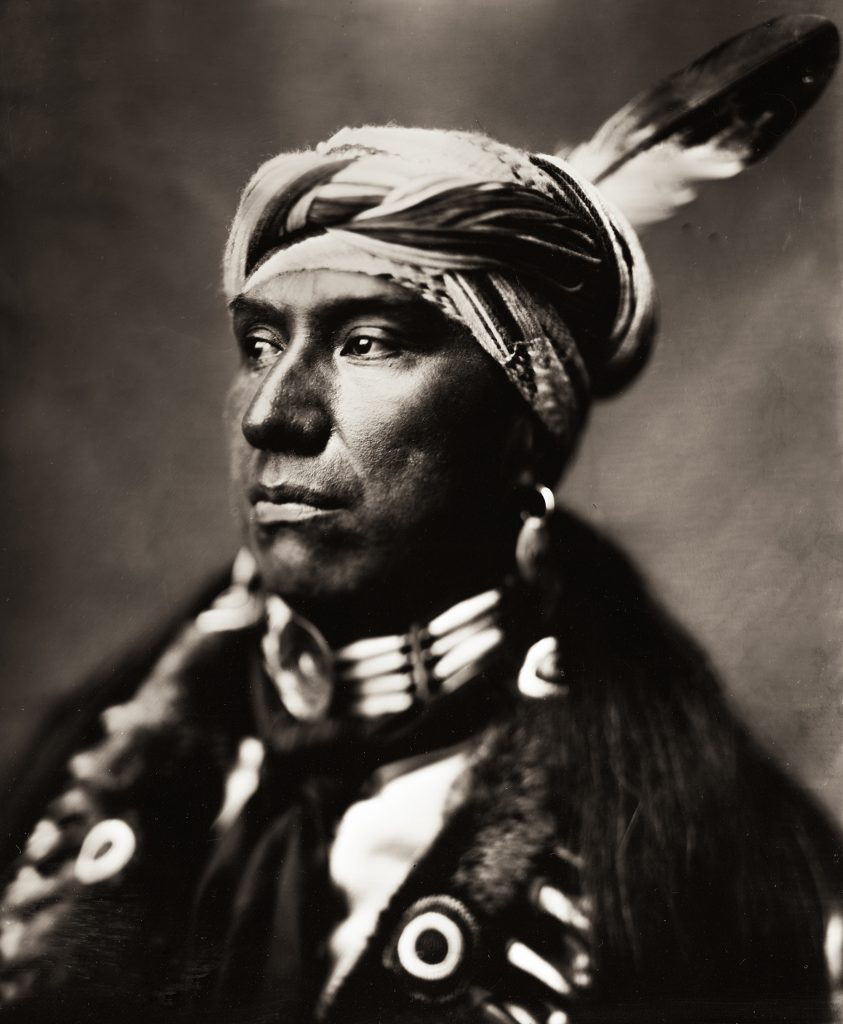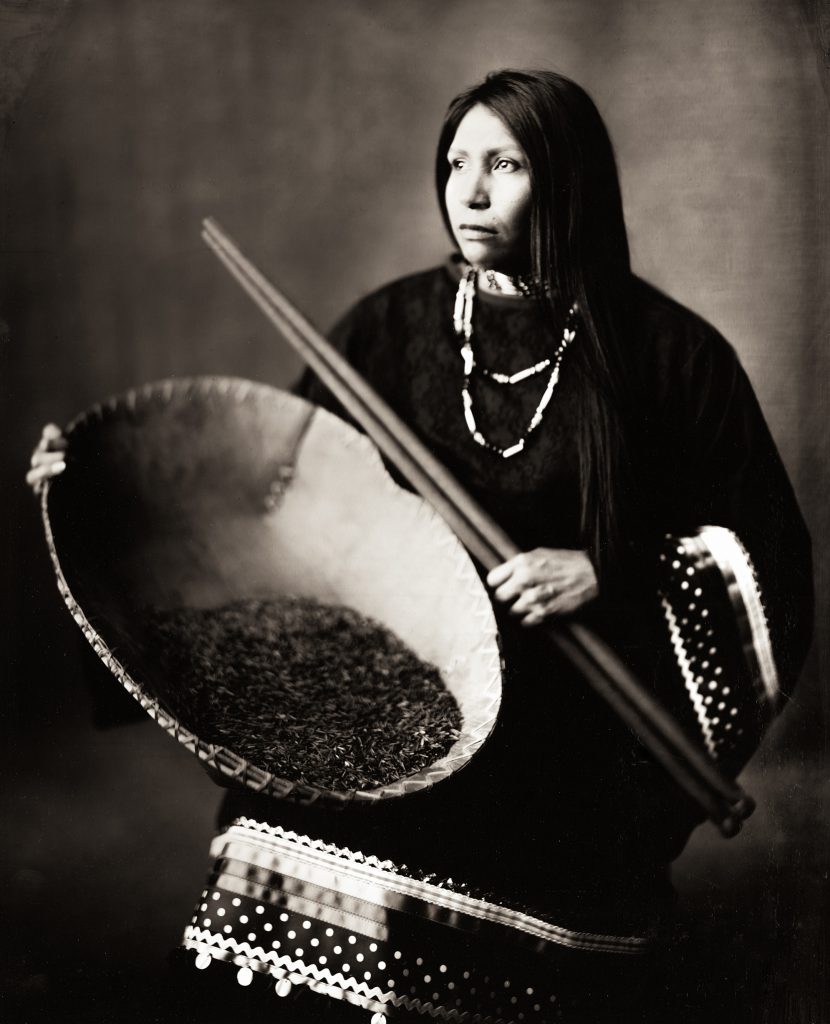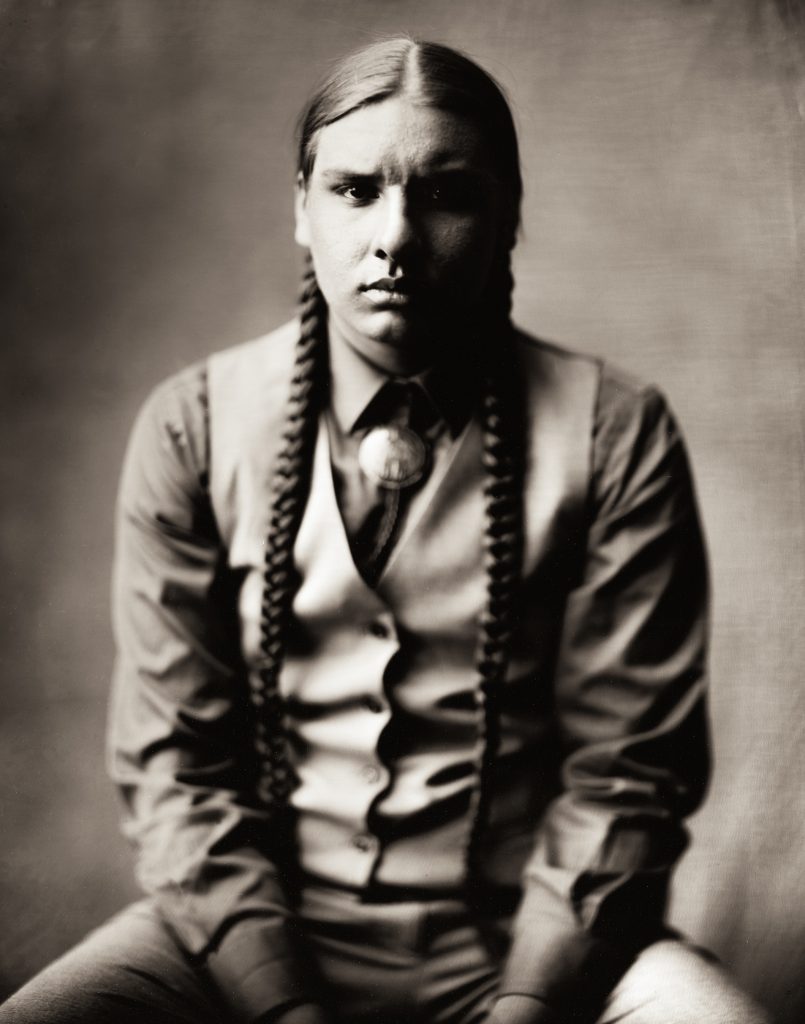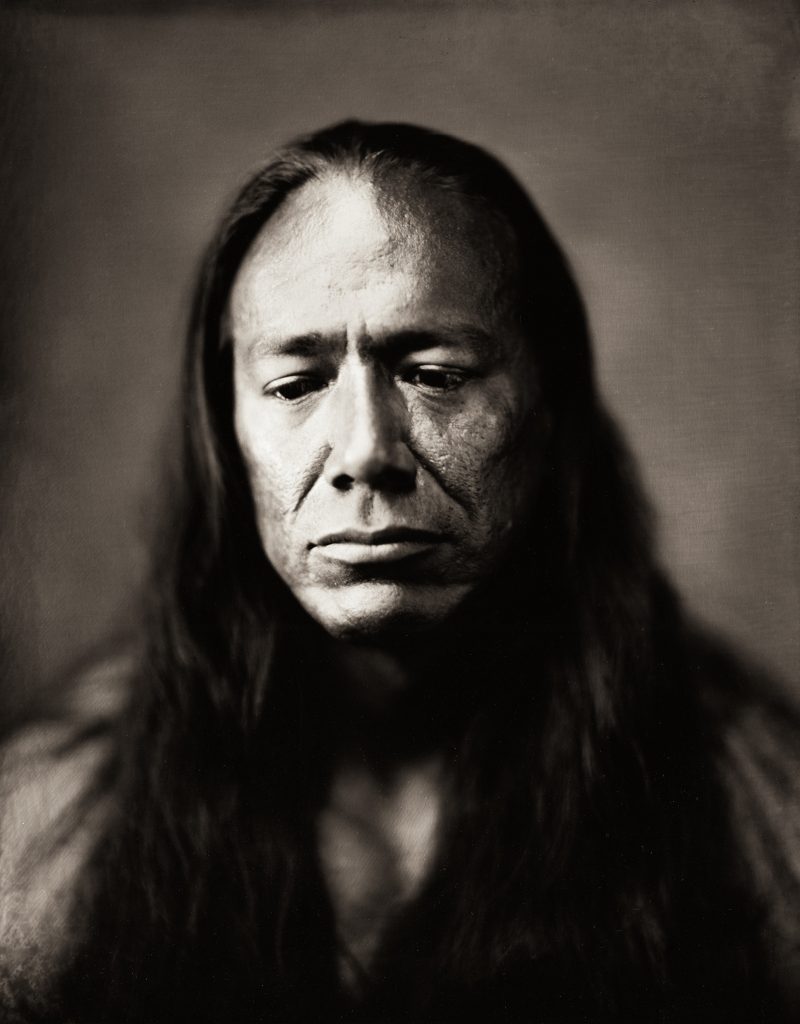Meet Shane Balkowitsch, an ambrotypist doing wet plate collodion work out of Bismarck, North Dakota. Before he began this journey in 2012 at the age of 44, Shane had no prior experience with photography. Within only eight years time, he has archived his work at 22 different museums around the world including the Smithsonian, the Library of Congress and the Nordiska Museet in Sweden. He has also designed and built his own natural light wet plate studio, Nostalgic Glass, the first of its kind to exist in over 100 years.
At the time of this interview, Shane had created a total of 3,590 wet plates. The majority of his work consists of large format 8×10″ black glass ambrotypes. This body of work is so comprehensive that one could easily spend hours acquainting themselves with the work of Shane Balkowitsch. We have included some highlights here, but encourage you to fall into his world and find inspiration in who Shane is, the life he has designed for himself, and maybe even find the courage to try wet plates for yourself!
How did you get started with ambrotypes?
I saw a wet plate online and asked “what is that?” Something pulled me in and I had to chase it. I had never owned a camera, never taken a class, or had any interest in photography. I was 44 years old at the time and I made my first wet plate 45 days after seeing that plate online.
I had no idea what I was doing, I had no idea even what an f-stop was or what was needed to make a proper darkroom. I was fumbling in the dark for an image; that is all I cared about–getting an image. My first wet plate was an image of my brother, Chad Balkowitsch, taken October 4th, 2012.
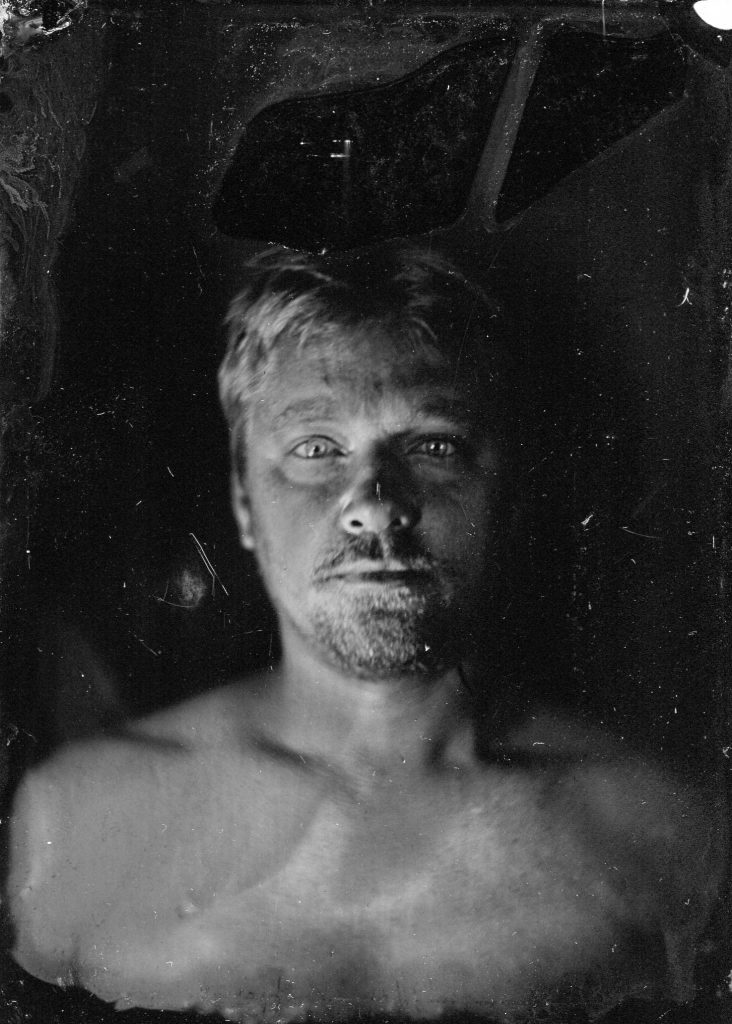
The first wet plate Shane Balkowitsch made. Chad Balkowitsch, 2012.
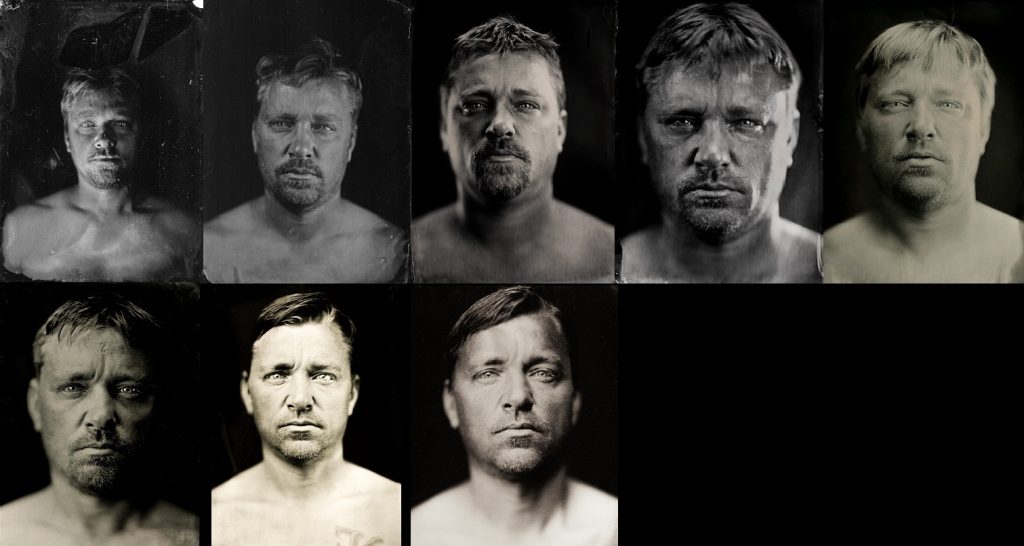
Chad Balkowitsch photographed on the same day every year by Shane Balkowitsch.
Why do you love doing it? What inspires you?
I do not have an answer to that; all I know is that I must create things using this process. It is as if I was always meant to do this, I just did not know it until I found the process. I specifically focus most of my work on portraits, so I would say that people inspire me: people from all walks of life, interesting people. Most every person has something to provide in a portrait. I find inspiration in paintings, photography, music, sculptures and culture. Anything can inspire me, the key is to be open to it and act on it.
What is your process like?
The process was invented by Frederick Scott Archer in 1848 and introduced to the world when he wrote “The Chemist” in 1851 in a scientific journal. I am not pretending to take “old time” photographs; I am using the same process from 165 years old to render my images from chemicals onto glass. It is a romantic process. My exposure times in the studio are around 10 seconds, so it takes me about 600 times longer to make a wet plate than with a digital camera. Wet plate is all that I practice; I have no other cameras or digital cameras in my studio other than the camera on my phone.
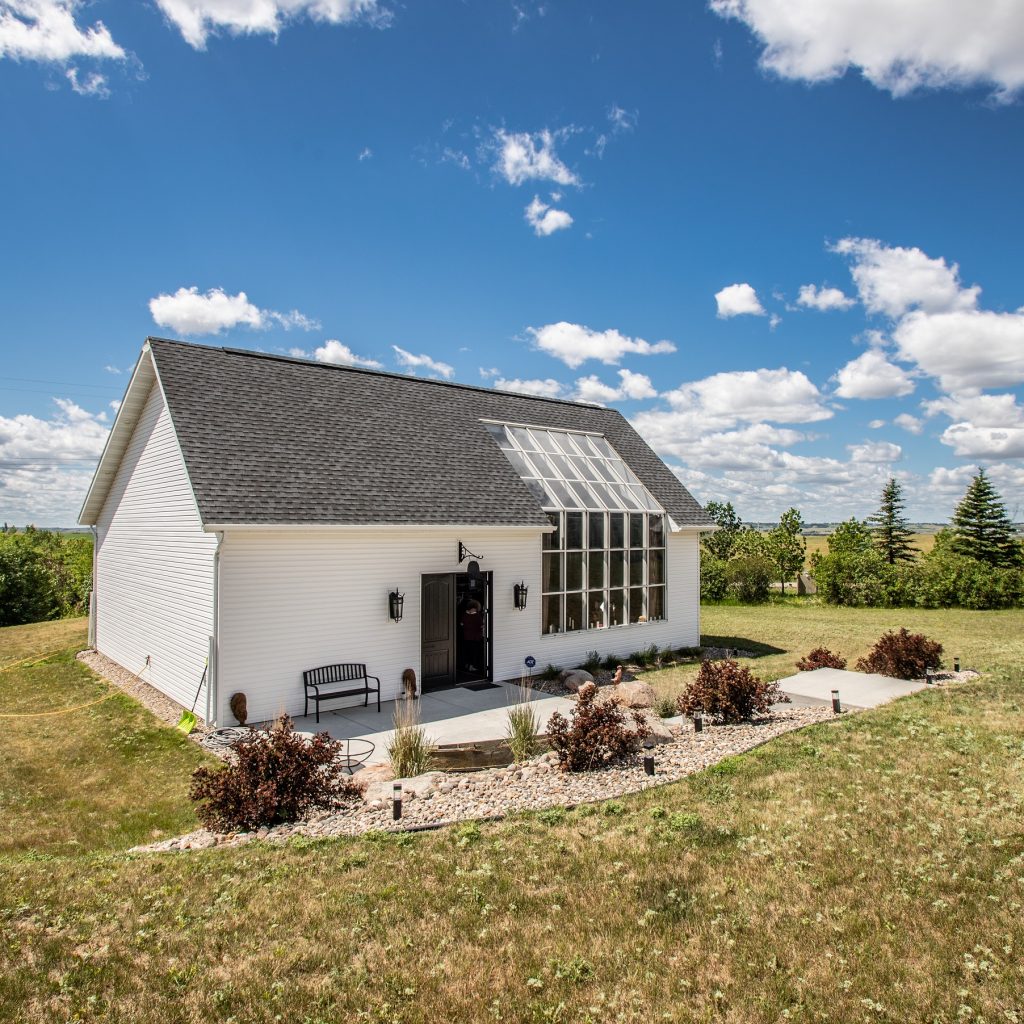
Nostalgic Glass Studio custom built by Shane Balkowitsch in Bismarck, ND.
Where do you source your materials?
There is a company called Bostick and Sullivan and they provide chemicals for wet plate and other alternative processes. What is most important for me is consistency. The process can be very difficult at times and even seasoned practitioners can struggle to make images on any given day, so we never take that for granted. Many things must come together to create an image, so we must be diligent about following each step and not deviating from the process or we may not create a successful an image. It is very magical.
Any sufficiently advanced technology is indistinguishable from magic.
Arthur C. Clarke
Is collaboration part of your process?
Always. Collaboration is so important in my work. It is important in my larger collaborative shoots as well as when someone comes into my studio. I am always trying to build a rapport with people who sit for my photos; I must gain their trust. I always ask for opinions and ideas for my shoots because I think it is through collaboration that real trust and meaning can be found. I don’t always have the answers, but we work through it and figure it out as we go and you would be surprised at what happens! You can get the most amazing image without having planned anything. That tells me that spontaneity tends to be a key factor in much of my work. I do not do test shots. I am always shooting to get “the shot.” No practice—just do it.
Behind the scenes of the Shane Balkowitsch project The Capsizing of Humanity.
What kind of mistakes did you make at first and how did you learn from them?
I tell college students when they come out of University and Junior college, “As an artist I am imperfect, my sitter is imperfect, the wet plate process is imperfect, but when you bring all of these imperfect things together, sometimes you can get something rather perfect out of the process,” and that is how I feel about this process. You have to put yourself in the position to get the shot. You must take chances. If you do not, you have no chance at getting a meaningful image. But at the end of the day, I am human, and like all humans, I make mistakes. You take the good with the bad and you continue; that is imperative.
What tricks have you learned to make the process more efficient?
This process has nothing to do with convenience or efficiency. We do not do it because it is easy—if that was important, nobody would take on this process. The process is what it is, but at the end of the day, it is the most significant photographic process ever invented, and we abandoned it in the late 1800’s for something easier and less difficult. It is the only photographic process that I know, so for me, the struggle is part of the process. If you want to make wet plates, you have to expect to struggle. It is like wanting to be a swimmer and not wanting to get wet; it just does not work that way.
What advice do you have to new photographers?
Start slow, do your homework, find a mentor, and just do it. I taught myself so much by reading.. I have a mentor that I’ve never met in person by the name of Andreas Reh in Germany. He gave me guidance early on and I have always honored him by calling him my one and only wet plate mentor. Although many people have helped me, what he did for me was most important to my success. In fact, I use Carl Zeiss Tessar lenses exclusively because he suggested them to me years ago. We were scheduled to meet each other in Europe this year, but the pandemic cancelled those plans sadly.
(left to right) Larry Allen Yazzie, Veronica Lynn Skinaway, Thane Marshall Beheler and Kory David Annis photographed by Shane Balkowitsch.
How can people support your work?
I would like to invite any Native American from any tribe to participate in my series, Northern Plains Native Americans: A Modern Wet Plate Perspective. This project is a 20 year-long mission to capture 1,000 Native American portraits on wet plates. Last year I released the first of four books that I will publish from this series and they have already sold out. Please email me via shane@balkowitsch.com to inquire about participating.
The documentary Balkowitsch just became available on Amazon in the USA and on Vimeo outside the USA. I would recommend it if anyone is interested in what I am doing. Two young filmmakers did their first documentary about my work with no budget. I am very proud of them and the work that they did. If you watch the documentary, you will be paying for their time and energy and that makes me happy. I didn’t pay them to do this and I make no money from the film, but I think it gives people a good glimpse into what I am trying to achieve and I am honored that it has been made.
Is there anything else you would like to share with us?
I think the arts are important. In schools, so often all of the attention is focused on sports and I think that is so misguided. The arts are where the real humanity is. It is the pieces of art which survive for hundreds of years that tell us something about who we are, and gives us a glimpse into the past. The preservation of history is very important and my silver and glass images will be here 1,000 years from now properly preserved.
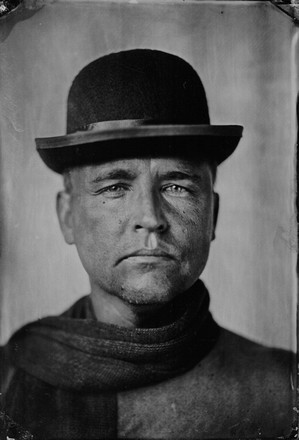
Self portrait by Shane Balkowitsch, 2013.
